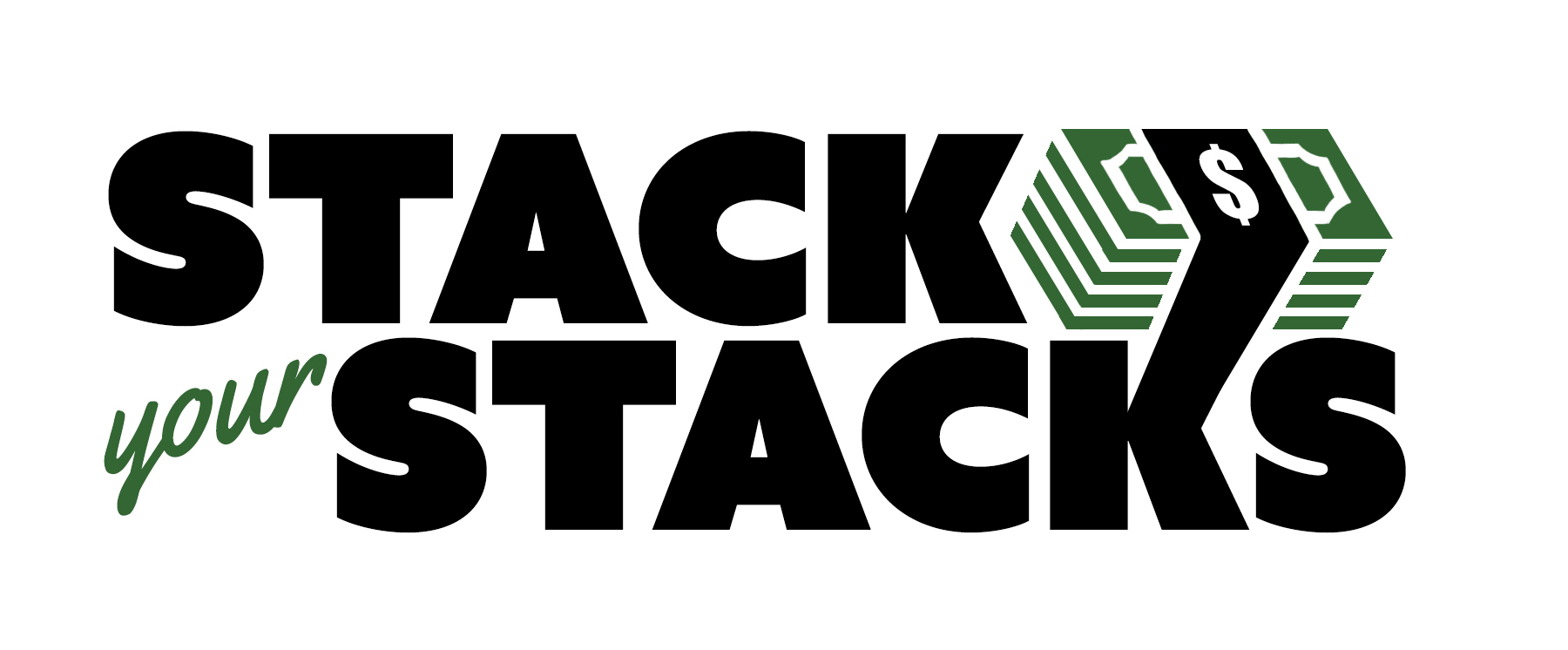11 Side Hustles For Medical Students To Make Extra Cash
Medical school can be a long and arduous process. But some students can’t afford to solely focus on school; they may have bills that need to be paid outside of their student loans. Or perhaps you’re a student that simply wants to earn a little extra cash for occasional takeout or fun money. These side hustles for medical students are a great way to make some money!
Some of these are surprisingly easy (though perhaps don’t align with everyone’s comfort level), while others may be a bit more difficult or require more mental effort.
Disclaimer: This post is for educational purposes only and should not be construed as financial advice.
Disclosure: This post may contain affiliate links or referral links. I may earn a commission or credit if you make a purchase or sign up.

1. Tutor
Where you a whiz at Biology 101? Did you love your early college Anatomy and Physiology class?
Why not become a tutor for pre-med college students or high school students? You can help them improve their grades while simultaneously earning a bit of money. You can control the number of students you take on – whether you want to just stick with one student at a time, or offer a few sessions each week for a couple students.
The average rate varies based on your location and experience, but tutors can typically charge around $25 to $75 per hour. This is a nice side hustle for a medical student as there are no major start up costs and you decide your own time commitment.
The downside, of course, is that after spending so much time in medical school – you may be burnt out at the thought of doing more academic-related work, even if it’s earning you money.
2. Participate In Medical Research Studies
Participating in a medical study might sound a bit scary, and yes, some do come with some risks. However, many medical studies are relatively low risk and may offer some payment.
For example, recently there was a paid study I came across that offered payment for participating in a virtual health coaching program and tracking the impact on weight and blood lipids.
Studies will have certain qualifications that vary – like being a certain gender, falling into a particular age range, having a medical condition, being in a certain weight range, taking certain prescriptions, and more.
The payment for medical studies varies widely. Low risk, short studies generally pay less, whereas those that are longer, require overnight stays, and/or have more possible side effects typically pay more.
When signing up, be sure you read everything through carefully and are comfortable with the processes and procedures. These studies are a unique way to be involved in medical research as a student, and may trigger your own research interests down the line.
3. Sell Advertising Space On Your Car
Got a car? Well, then you’ve got a moving billboard!
There are companies that will pay you to brand your vehicle by creating a car wrap that displays the company info. With most companies, you can earn around $100 to $300 a month via this passive revenue stream.
To earn payment, most companies require that you drive a certain number of miles each month, and may also have qualifications for the vehicle. For example, most websites note that Carvertise requires you to have a 2008 or newer vehicle, and drive at least 30 miles per day (though I couldn’t find these requirements on the website, they’re reported by numerous outlets, so I’m assuming they’re true).
Also, some important notes:
- Some locations may consider car wrapped vehicles as “commercial vehicles” (requiring commercial insurance), so be sure to check with your local laws and insurance company to ask questions before doing this.
- Car wrap texts and emails are a common scam, so you need to source out reputable companies to work with. The Penny Hoarder has a great list of reputable car wrap companies.
4. Freelance Writer (or Reviewer)
As a doctor-to-be, you have a unique advantage for becoming a freelance writer or reviewer. (Writers write the article; some sites have a separate reviewer that looks at the article to make sure it’s accurate).
In the digital space, Google has an acronym called “YMYL” – your money your life – and sites that involve health or financial information fall under those sites. Google has stated that sites providing content in these spaces have “EAT” – expertise, authoritativeness, and trustworthiness.
In other words, health sites really need medical writers that know what they’re talking about! Providing factual information on medical articles and having a medical student’s name attached to them (either as the writer or reviewer) can be really valuable for the site.
As a somewhat similar example – my career path started as a Registered Dietitian, though I never went the clinical route after completing my dietetic internship. These days, I do quite a bit of freelance writing in addition to my own websites, and it can bring in a considerable income. Having the RD credential is very valuable for me when pitching freelance assignments.
Sound like something you might want to pursue? Look for writing opportunities online via sites like Indeed. Editors may post on social media sites like Twitter or LinkedIn when they’re hiring writers as well. You can also look into some of the big health sites – like Healthline or VeryWell, for example – and inquire if they have open freelance writer or reviewer positions.
Most writing positions pay by the word, with articles ranging from around $0.20 to $1 per word. (Digital publications are generally in the $0.20 to $0.70 range). Some companies pay for an article within a range instead, for example, paying perhaps $400 for an article between 1000 to 1200 words.

5. Donate Plasma
As a medical student, you probably know a little bit about plasma. It’s the liquid part of the blood that contains important proteins and antibodies. It’s used in both research and creating pharmaceutical products.
If you’re in good health, donating plasma might be a good option for earning some quick cash. You technically can’t be paid for the plasma itself, but you can be compensated for your time, which is why most plasma donation centers offer compensation.
When you donate plasma, you’ll have a needle placed in your arm to draw blood. The blood will then flow through a machine that separates out plasma. The other components (like blood cells) are returned to your body.
The Department of Health and Human Services notes that donating plasma typically doesn’t cause any side effects, but occasionally you might run into some fatigue, dehydration, or bruising.
Pay varies based on the location, but money.com notes that most centers pay around $50-75 per donation.
Some locations offer bonus incentives for new donors to commit to donating several times. For example, BioLife Plasma Services was recently offering a payment of $900 for donating plasma eight times. Not a bad payout when you consider the relatively minimal time commitment of an hour or so per donation (longer during the first visit for screening and whatnot).
6. Donate Sperm
This one obviously only applies to the men out there, and some may not love the idea of donating sperm to create children in the world that they don’t know about. But for others, it could be a viable side hustle.
You’ll need to be a young adult for this side hustle, as most sperm banks cap the donor to an age limit of 40. You’ll also need to pass certain medical screenings.
If you do pass everything and decide to proceed, you can earn quite a bit when done regularly. Most sperm banks report payouts of around $30-$70 per donation, plus $20-$30 at batch release.
7. Babysit
Yes, it may be reminiscint of your middle or high school way to earn money – but these days, people of all ages are babysitting. Parents are more concerned about child safety than ever before, so being a medical student (who is likely CPR certified) offers an advantage compared to other candidates.
Most babysitting gigs start around $15-20/hour for one child, with rates increasing for multiple children. The pros are that it requires no money to get started and can be easy to find clients if you have good connections in the community; cons are that it can be physically and emotionally exhausting after a long day of school.
If you own a house or have a big, kid-friendly apartment, you could also offer one-time babysitting events if you don’t want to get tied down to a regular schedule. Try to plan these surrounding holidays.
For example, you could set up a “parents shopping night” close to Christmas, where parents drop their kids off to you and go out for a few hours together to shop. You host up to a certain number of kids, and plan fun holiday games, activities, and snacks for them.
You can do something similar on Valentine’s Day, offering parents the ability to go out on a date.
If you host six kids at $20/hour each for 3 hours, you’re looking at $360 for one night of work.
8. Walk Dogs (or Take Care of Other Pets)
Apps like Rover and Wag make it easy to find dog walking, pet sitting, and other fun animal gigs. You can sign up on these apps and pet owners can view your profile and availability to book you for services.
We all know the stress relief from a good snuggle with a dog – so this could be a great side hustle for a medical student. Plus, walking dogs allows you to earn money while you get in a little exercise, making it a true win-win.
Rates vary widely based on the location you live in and the services. You might earn $12-$30 (sometimes more) for a walk, or $30-$70 for boarding.
Note – According to Nerd Wallet, Wag takes a larger percentage of your earnings compared to Rover, so it sounds like Rover might be the way to go (unless most people in your area use Wag).

9. Get a Gig Job.
Gig jobs aren’t glamourous and they don’t pay big bucks – but you can set your own hours, work as much or as little as you can handle, and are perfect for a hectic medical student’s schedule.
Here are some popular options:
- Drive for Uber or Lyft
- Deliver food with DoorDash or UberEats
- Do grocery shopping and delivery with Instacart.
- Pick up hospitality or customer service shifts on Instawork (This is an on-demand staffing platform. It’s not available in all locations yet, but there do seem to be some good opportunities in my area. As a bonus, if you sign up for Instawork with this link, you’ll earn a $50 bonus after you complete four shifts.)
- Becoming an Amazon flex driver (In this situation, you’re an independent contractor and work with Amazon to pick up random delivery shifts. They say most drivers make around $18-25/hour).
- Become a Walmart Spark driver.
10. Build up Bank Bonuses and Credit Card Rewards.
You need to be very disciplined if you go for this option, but it can be a great way of earning some passive income if you can keep track of it.
Many banks offer bonuses for opening an account – for example, sign up for a new checking account and earn $300. If you can track down these offers and follow the guidelines, it can be an easy way of earning cash without actually working.
The key is to make sure you actually follow the guidelines, and don’t sign up for any that you can’t fulfill the requirements. Some will require direct deposits, for example, and as a med student you probably don’t have another job that’s giving you direct deposit paychecks. Just be aware of these and look into them prior to starting this.
You can also look at credit card rewards. For example, I really love the Chase Sapphire Preferred Credit Card. You can earn 60,000 bonus points when you spend $4000 on it in the first three months. That may sound like a lot, but if you’re able to pay for things like rent, utilities, food, and other essentials on it – you can typically meet that spend to earn the points. Those 60K points equate to $600 cash back (or potentially a higher value if you redeem them for travel rewards).
If you want to pursue either of these, keep track of key dates in a spreadsheet and don’t sign up for a bunch of things at once. Start slow and make sure you can stay disciplines. Most importantly, don’t blow your budget and spend extra money to do credit card rewards; only spend on essentials you’d already be purchasing.
11.Work As An EMT
If you’re looking for a job that will get you extra experience in the medical world, working as an EMT might be a good option. You can see what first responders aactually experience before patients are sent to the hospital, giving you a better understanding of the big picture.
Many EMT companies are short on employees, and may be happy to have a student on a part time schedule. In some major cities, you can also find per diem EMT jobs, where you can pick up shifts on an as-desired basis.
The downside to this option is that you do have to do an approved training course and take a national licensing exam before starting. This might be more work than you’d like up front before even getting paid.
In addition, payment for EMTs is notoriously low. According to this salary website, average hourly pay is only $17 per hour. For the amount of training and effort that goes into this, it may not be worth it for many students. But if you love the idea of getting hands-on experience and helping people, it could be an option for you.
Conclusion
While med school can be a financially challenging time in your life, there are ways to earn some extra cash. Whether you want to go for the passive income route like car wrapping, a gig job on your own schedule, or do some freelance work – hopefully you’ll start making some money soon!
PS – In addition to making money, you might also appreciate these money-saving hacks to reduce what you’re spending.






